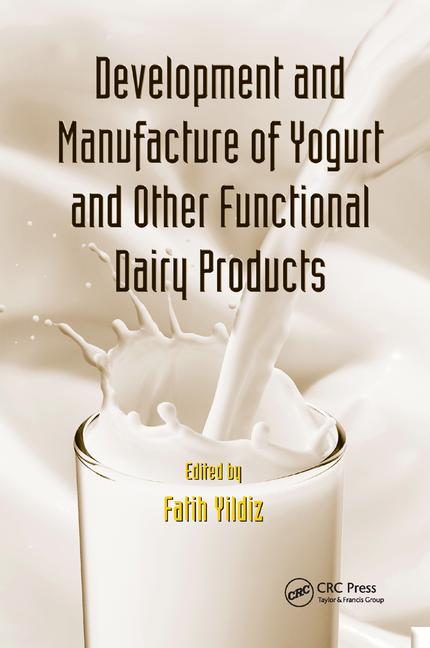Dairies are more dangerous than other plants

Fall hazards were one of the common violations found by OSHA in dairy plants. Fall protection training should be top-of-mind. Photo courtesy of Alchemy Studios

Agropur improved worker safety by building a gantry in the receiving area of its plant in St. Paul, Minn. Previously, workers wore safety harnesses when they wanted to gain access to the top of tankers. Photo courtesy of Nate Larson

Dairy plant workers need to be alert and careful when working with knives and other sharp objects. Photo courtesy of Alchemy Studios

Nelson-Jameson Inc. offers SaniWear disposable lab coats with hook-and-loop closures. Five double-sewn hook-and-loop tabs stay in place through vigorous activity and replace snaps that can go missing on traditional disposable clothing. The protective garments are made of lightweight, spunbonded polypropylene material, are available in four colors and in sizes up to 5XL. 800-826-8302; www.nelsonjameson.com

Heinkel Drying and Separation Group has a modular and individual designable working platform for fast installation. The platforms can be installed inside almost all conical process vessels like reactors, Nauta-style mixer/dryers and single-shaft dryers and mixers. Some essential features include: Stable aluminum construction, easy-handling, rubber pads to protect the vessel’s wall surface, and rescue hatches. Other openings are possible. 856-467-3399; www.heinkel.de

Ronco introduces new Defensor Level 5 cut-resistant gloves with a unique thumb-crotch reinforcement for extra protection and durability. Extra HPPE fibers are sewn into the thumb-crotch area creating an extra layer. This layer makes it more resistant to wear and tear, which increases the longevity of the glove to reduce overall costs. These gloves are designed for jobs entailing high-cut and scrape hazards. The gloves are available in two styles: nitrile coated and polyurethane coated. The gloves are also abrasion-resistant and breathable. 905-660-6700; www.ronco.ca

Shoes for Crews has created its Bullfrog PRO Safety Toe Boot for industrial workers. The boots are slip-resistant, waterproof, durable and antibacterial, and oil- and fuel-resistant. They also feature removable cushioned insoles in a soft, comfortable material made of a high-grade EVA/rubber blend. 800-523-4448; www.shoesforcrews.com

Safety in dairy plants needs to go beyond the subject of food safety if a plant wants to run efficiently and effectively. There is a lot of talk about food safety, but what about worker safety? Issues like fall protection and other safety training need to be emphasized.
Nearly 3 million nonfatal workplace injuries and illnesses were reported by private-industry employers in 2012, resulting in an incidence rate of 3.4 cases per 100 equivalent full-time workers, according to estimates from the Survey of Occupational Injuries and Illnesses conducted by the U.S. Bureau of Labor Statistics. The rate is even higher for dairy manufacturing. Are dairy plants more dangerous? Yes, according to the same survey. Dairy product manufacturing has more incidents of cases with days away from work, job transfer or restriction than overall manufacturing. See the table on page 58.
Here are just some of the violations found by the Occupational Safety & Health Administration at dairy processing plants over the last five years:
- Failure to fully implement and properly install fall protection for workers performing milk unloading operations.
- Fall hazards from elevated work areas, unguarded machinery and failing to provide properly designed electrical equipment for wet locations.
- Electrical problems, safety guarding of moving machinery parts, energy lockout deficiencies and confined space entry violations.
- Lack of hoist system inspections, unguarded floor holes, deficiencies in the facility’s lockout/tagout program, unguarded belts, pulleys and sprockets and electrical hazards.
OSHA has fined companies as much as $295,000 for these types of serious violations.
Companies like Austin, Texas-based Alchemy Systems believe the key to safety starts with training. Alchemy provides technologies and services designed to align employee behavior with a company’s quality and safety commitments.
According to Laura Dunn Nelson, industry relations specialist for Alchemy, dairy facilities are among the most highly automated of all food processing facilities, which can lead to complacency with regard to safety training.
“Quite a few dairy facilities view training only as a ‘check the box activity,’ often using outdated materials that also may not take into account education and language barriers or how to fully engage today’s worker,” said Dunn Nelson. “Many facilities have a tough time planning training sessions that fit their busy operation schedules and high production demands, so trainings are few and far between, increasing the risk for an eventual audit fine.”
She continued, “It’s clear from recent research, training alone will not achieve 100% behavior compliance. Research confirms that effective training and verification of employee behaviors on the plant floor will significantly improve food safety and workplace safety compliance. By engaging the employees and coaching them, supervisors are able to troubleshoot noncompliance and work directly with employees to perform root-cause analysis and meaningful corrective actions or positive reinforcement, to align employees and drive operational excellence.”
What sort of training does Alchemy recommend? For the dairy industry it’s important to educate employees on the critical fundamentals that ensure a safe and productive work environment, said Dunn Nelson. Alchemy recommends ensuring the training program leverages recent technological advancements and is geared toward the adult learner. Most importantly the program should include:
- Up-to-date content available in multiple languages
- Real-time remediation to ensure comprehension
- A means for verifying behavior changes on the floor
- Comprehensive and secured record-keeping
So how often should this training take place? Dunn Nelson said it “depends on the job at hand, the product being produced and audit requirements.”
She explained further that training should be more than a “one-time or once-a-year obligation. It should be an ongoing process, and it doesn’t end when workers step outside the classroom.
“Refresher sessions and observations allow trainers to coach employees towards better behaviors,” she said. “When best practices become habits, an overall culture of safe practices can be achieved and maintained, thus effectively reducing incidents and improving operational efficiency.”
Dunn Nelson also said that the person who leads the training sessions “should be well versed and experienced in the topic at hand, speak the language of the employees, understand adult learning needs and be respected by the other employees.”
But in the end, “all employees contribute to a safe working environment,” she said.
This is never truer than with the “self-policing” method. In some of the dairy plants that Dairy Foods has visited, companies have encouraged self-policing, whereby employees can call out their co-workers if they see a safety issue arise or a violation occur. This method is a smart practice to follow to help maintain a safe work environment.
Looking for a reprint of this article?
From high-res PDFs to custom plaques, order your copy today!








